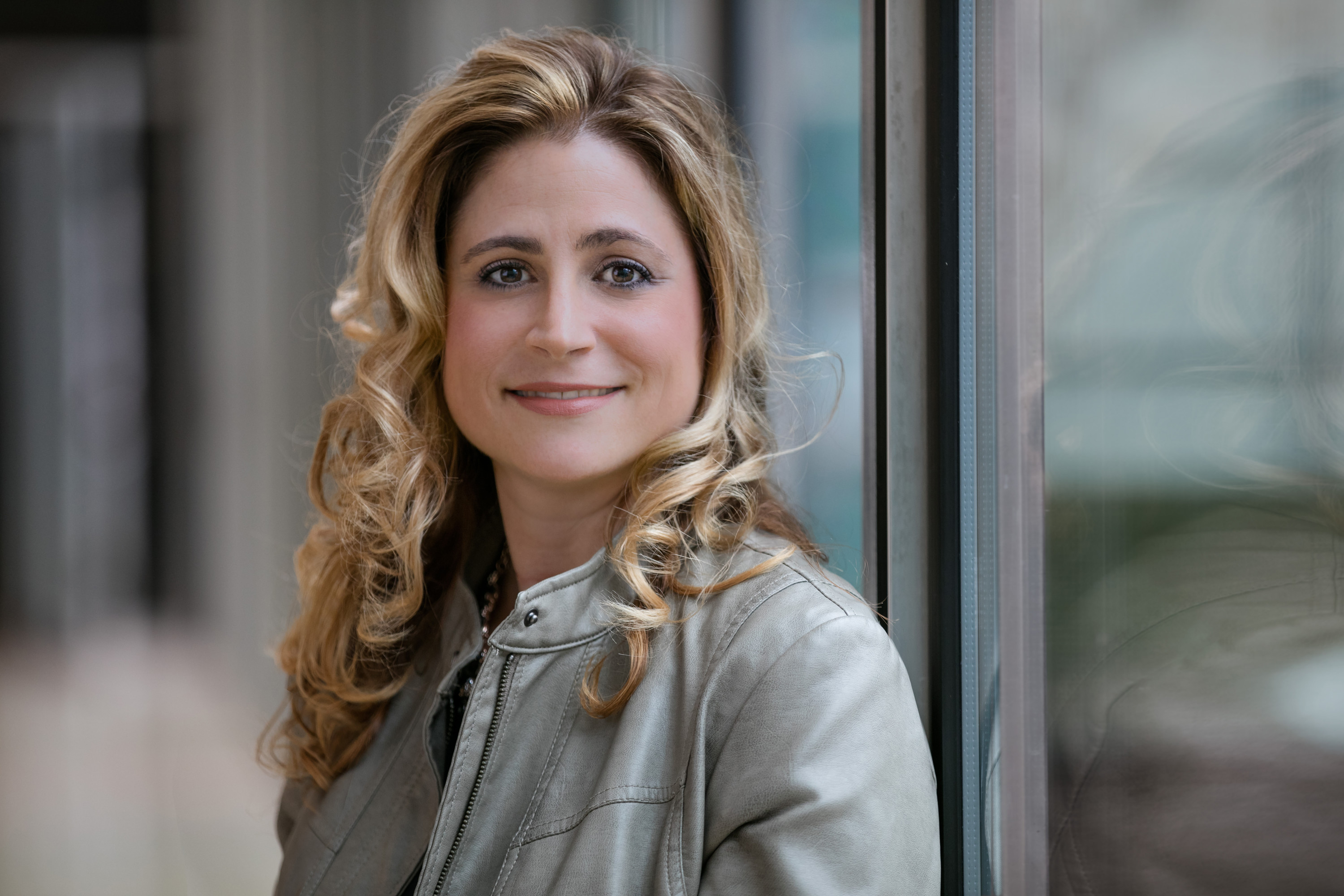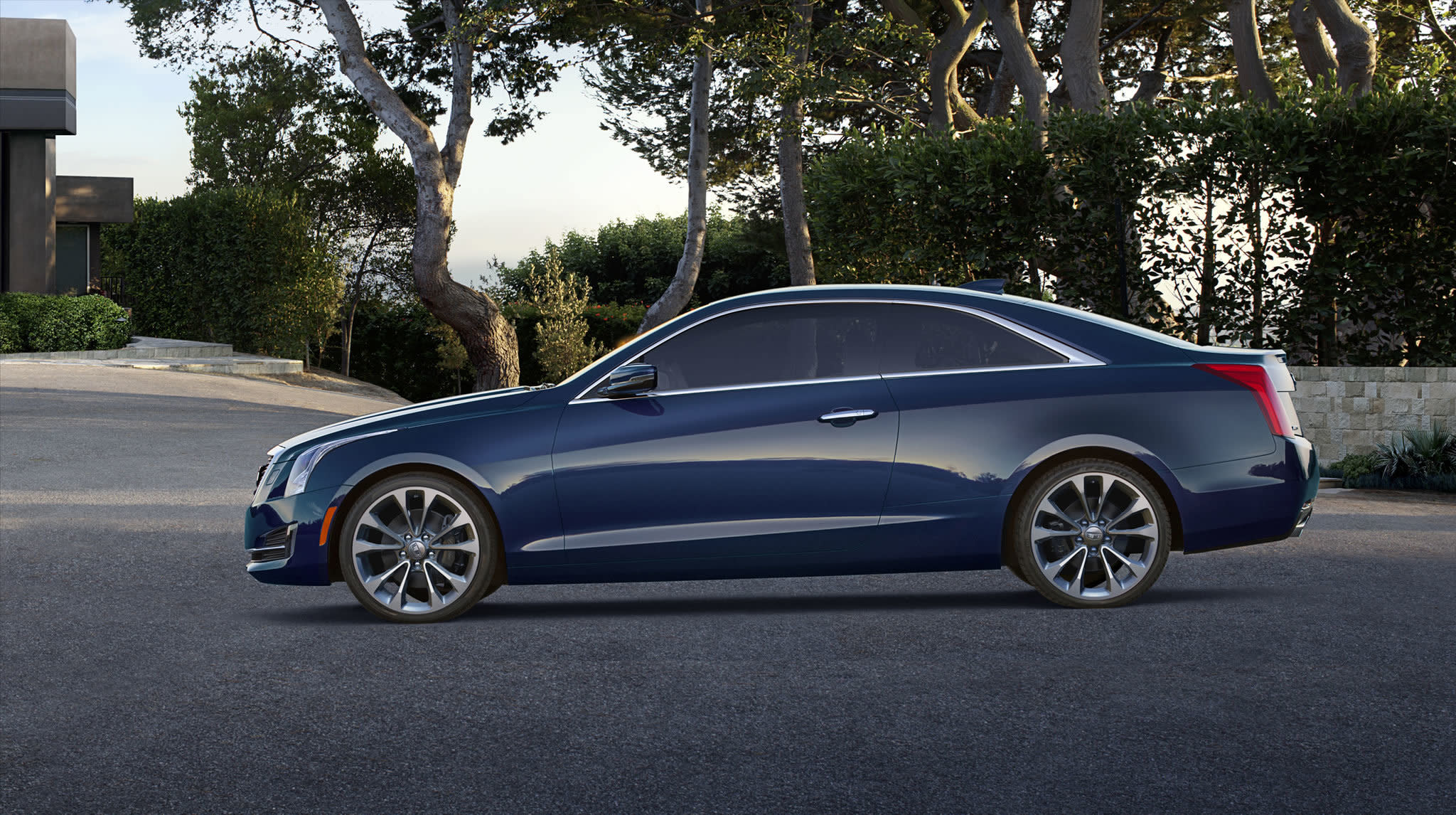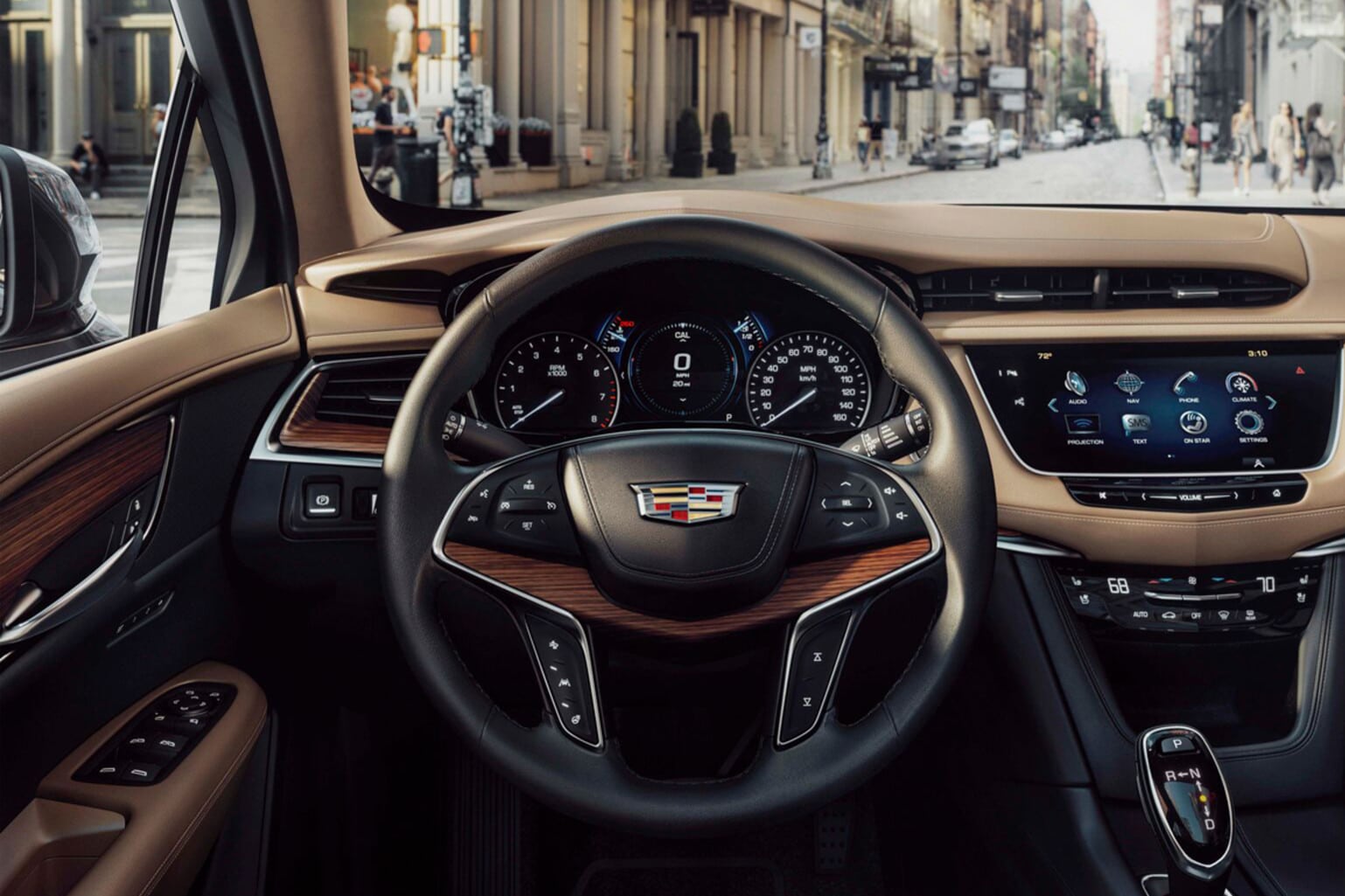Keeping up with trends can be hard, but Michelle Killen’s got it harder. As the lead creative designer at Cadillac, she has to predict trends three years in advance because that’s how long it takes to get a luxury car from concept to released on the road.
“We do a lot of competitive benchmarking, a lot of trend research,” Killen explains over the phone from Detroit, “so that when we go to design the interior colour portfolio, we have a really good understanding of where the market is going to be at the time of the release.”

Using words like “program” to describe a single car design project and “perf” to describe the perforated patterns that will become leather seats, Killen sounds like an old hand now, but as a student, she never envisioned earning a spot in the Color & Trim department of a luxury vehicle company. It wasn’t until the final year of her traditional interior design degree that she even knew that kind of of role existed.
We spoke to Killen about finding her calling, the single vision behind each Cadillac car, and why Pinterest plays a more crucial role in her career than motors.
Format: Hi Michelle! When did you first know that you wanted to design cars?
Michelle Killen: My senior year at school, General Motors came in and said, ‘We have this department called Color & Trim. Is it something you’d be interested in?’ I got to see what they did every day, and you know, after being in school for four years, doing the same thing, I thought maybe I’d do something different.
At the time that I graduated, to really do interior design you had to go to New York or California. I wanted to stay in the Detroit area, so I interviewed with GM and I was hired by the time I graduated my senior year.
So your original plan was to be an interior designer?
Yeah—Ever since I was little, I always remembered wanting to do interior design. Every time my mom was doing something with the house, I’d go shopping with her, help pick out the fabrics, pick the colors. I just thought, ‘Okay, this is it. This is what I want to do.’ And then when I saw what they did in Color & Trim I thought, ‘Wow, they use a lot of the same skill sets.’ You know, scale, pattern, colors…I was just taking what I would do in a residential environment and applying it to the interior and exterior of a vehicle.
Can you walk us through a typical workday for you?
I have a combination of meetings and creative time. We work with a lot of cross-functional teams. I work with manufacturing, engineering, the interior and the exterior studio, so there are a lot of different groups I meet with on a day-to-day basis. It takes a lot of people to build a car. We work roughly three to four years in advance. So for us, there’s a lot of up-front planning and design work. Then I’ll sit down and put color combinations together, or design perf patterns or fabric patterns, paint color…
What’s a perf pattern?
A perf pattern is a perforation pattern for leather seats. We build 1:1 scaled properties in our trim shop, and we build the real wood core that’s in the interior. We do mock-ups of that with staining, just to see what everything’s going to look like before it goes into production.
How is work divided up? Who’s responsible for which aspects of the design?
We divide up the Cadillac programs, so each designer owns their own program. They’re responsible for the color, grain and gloss, interior and exterior—any part that the customer sees.
When you say program, do you mean a car?
Yeah. So somebody did the CT6, the Escalade… Each person does a different vehicle.
That’s really interesting. It’s not design by committee. Each car bears the stamp of the individual designer that worked on it.
It does. With Cadillac, we have a very strong brand portfolio, so we understand what the brand needs to be successful.
How do you balance the worlds of creativity and commerce in your work? How much are you adhering to a style guide and how much are you making your own suggestions and changes?
We actually have a lot of ownership over the materials on the vehicle. We have our set leathers and such that we use, but when it comes to the colors, a lot of it is driven by the customers. We do a lot of customer clinics to understand what they’re looking for in their vehicle, and we present that to our executive leadership team and our marketing team.
We’re very lucky that our leadership team puts a lot of trust in us that we do our research and know what’s going to be on-trend. They allow us to put more expressive materials and colors in these vehicles. We always have our jet black, which is your safe interior that’s easy to love. But we like to have expressive interiors so we can reach individual customers.
If you really look at the luxury market—Cadillac, BMW, Mercedes, Audi—the suspension, the engine, and the performance of the vehicle are very similar to each other. The technology is what it is. But the color and materials, they give the personalization that’s going to pull the customer in. It’s easily relatable to them. They know what they like.
Customers want items that remind them of the interior of their home. People spend so much time in their vehicles, so they want to feel comfortable. All of that plays into the story that we create, so that we can get that buy-in.
Where else do you find inspiration for your designs, aside from the home or from researching trends?
I don’t think there’s anything that wouldn’t be inspiring. I mean, it could be a 3D-printed brake light that might catch our attention, or a new product that just came out on the market. The smaller things. We watch those items and see how they flow through the market. If you start to see something in fashion, it’s like, ‘Well, fashion has kind of a quick changeover.’ But once you start seeing that trend in really high-end products—in furniture that might be featured at the Milan Furniture Fair, where the pieces that people are purchasing are $10,000 or $12,000 and are going to be kept around for long periods of time—those are the trends that we want to pick up on. By the time we start our development, we want to make sure, four years from now when the car is finished, that that color hasn’t gotten old.
Pinterest is a great source of trend research. You’re seeing what your buyers are pinning. It’s a cool way to get a read on the market. We have a Pinterest where we interact with the customers, and have a feed, and they can pin what interests them. That’s a really nice, wide bandwidth of trend research.
Have you found that your job has changed the way you drive, or the way you interact with cars in general? When you’re in a car now, are you constantly noticing little details and wondering what you could improve?
Absolutely! It drives my family nuts. Before, I would go to buy a car and be like, ‘Oh, this looks really cool!’ And I’d just buy it and enjoy it. But it’s weird, because now I go to buy a car, and I’ve already been looking at it for three years. I want the one that I’m designing now!
Sitting in a vehicle looking at the grain, or looking at how two parts come together, I think, ‘Could we have done that better? Could we have done a different wood color?’ So yeah, I’m always looking at that, in both GM vehicles and competitors.
What advice would you give to a designer interested in working in this industry?
I think the biggest thing in the automotive industry is that networking is crucial. You really need to get out there. When the automotive companies come to your school and talk to you, you need to get involved with them. You need to learn who they are. Go to the auto shows. Even though the automotive industry is so big, it’s so small—everybody knows everybody. You need to talk to people and understand where they came from and what they do.
If you look at Color & Trim, we have about 30 designers, with different backgrounds, from all over the world. It’s a field that’s always changing.
Finally, do you have a favorite car you’ve worked on, a specific design that you’re most proud of?
You know what? It’s not a car. Before I did Cadillac Color & Trim, I designed exterior paint for eight years. So for me, it was the first paint color I ever designed, in 2012, called “Opulent Blue Metallic.” It was featured on the CTS Sedan. Seeing my color on vehicles on the road was so rewarding. Knowing that people liked it, seeing it at the auto show, seeing it in magazines was just the biggest pat on the back you could possibly get. The compliments from executive leadership, the Vice President of Design being excited by this color—it was very satisfying.
The thing is, with exterior paint or Color & Trim, it’s very emotional. You don’t have to be college-educated or trained to know what you like or don’t like. When colors don’t get selected for vehicles that you’re working on, people get upset about it. So I started putting crazy names on these paint colors. I did this gray for Cadillac, and I called it “You Drive Me Gray-zy.” And when you get to say “Pull Me Over Red” or “Blue Me Away,” people just lighten up. Then, the names get carried through engineering and manufacturing. I would go into the plants or on tours and they’d be like “Who named this crazy color? It’s so funny, we all had a laugh here!”

2015 Cadillac ATS Coupe V6 in Killen’s Opulent Blue Metallic
Both: Killen’s latest project, the Cadillac Escala
More on design:
MoMA’s Paola Antonelli Wants Design to Expose Violence
Exploring Marijuana’s Branding Problem
Designer Aaron Draplin is a 13-Trick Pony
Images curtsey of Cadillac/Header XT5









